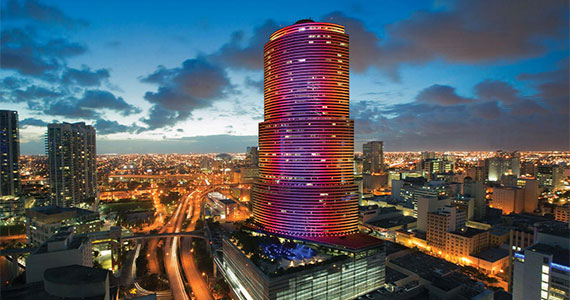Trending
Who are the Japanese investors behind Miami Tower’s $220M purchase?

In a bold re-entrance to a market it left only four years ago, the U.S. arm of Japanese trade conglomerate Sumitomo Corp. recently paid $220 million for the iconic Miami Tower office building.
The purchase marked one of Miami’s biggest investment deals so far this year, as well as a surprising display of optimism in the U.S. commercial real estate market from Sumitomo, which only has a handful of marquis properties stateside.
The Real Deal took a look at Sumitomo’s real estate portfolio to better understand why the conglomerate has again chosen to plant its flag in the Magic City.
“There’s clearly a renewed interest from both institutional capital as well as private investment capital for [office properties] in the downtown core,” Ken Krasnow of Colliers International told The Real Deal. “Office space in the downtown core is certainly at a premium. There’s only a handful of institutional-quality buildings.”
Sumitomo Corp., a massive global trade conglomerate, owns businesses as diverse as the 65 countries in which it operates. As a cheery introductory video on the company’s website explains, Sumitomo has zinc and lead mines in Bolivia, banana plantations in the Philippines and power plants in Abu Dhabi, among many other interests.
The company also has a long history developing and investing in real estate, both within its home country Japan and abroad. Data from Real Capital Analytics shows the company has interests in 63 properties worldwide with an estimated value of $4.9 billion. Most of those properties are office buildings in large Japanese cities like Tokyo, though a smattering of development sites, retail and industrial buildings are also included.
Within the last decade, Sumitomo has acquired interest in $2.4 billion worth of property and sold another $2.3 billion, according to the data.
For its real estate dealings in the U.S., however, Sumitomo seems to take a much more calculated approach. Before its purchase of Miami Tower, the company’s stateside office holdings included only two office towers, both occupying premium locations in their cities’ respective central business districts. Sumitomo owns the Class A office tower at 203 North LaSalle Street in Chicago, for which it paid $111.5 million in 2014, and the tower at 450 B Street in San Diego, which it acquired for $73 million in 2013.
Now add Miami to that list. The Miami Tower was sold by LaSalle Investment Management, which paid $105 million for the building six years ago.
The purchase smacks of Sumitomo’s previous and first foray into Miami in 2008, when it made a splash in the office market with its $260 million purchase of the 34-story Miami Center building. Four years later, the company sold Miami Center to Crocker Partners for a mere $2.5 million more than what it paid.
As recently as a few years ago, “South Florida wasn’t viewed as a long-term investment; it was opportunistic,” Krasnow said. “Now, Miami is viewed from the capital perspective. It is much more of a strategic investment.”
In the past year, institutional buyers like insurer Prudential Financial and TIAA have swallowed up large swaths of office product in suburban markets like Coral Gables and the business parks surrounding the Miami International Airport.
Meanwhile, new product entering Miami’s downtown area today is almost exclusively part of larger mixed-use projects like Brickell City Centre and the MiamiCentral train station, instead of traditional stand-alone office towers, according to Howard Taft of the Aztec Group.
On top of that, Taft told TRD, the amount of new product in the construction pipeline — a little over 400,000 square feet in the central business district as of this year’s first quarter, according to CBRE — is dramatically smaller than what was delivered during the previous cycle. And with rising land prices due to condo developers eating up development sites, that trend is likely to continue.
Taft said downtown vacancy rates have dropped to 14.4 percent, all while office rents are pushing upwards of $60 per square foot.
Though Sumitomo has been tight-lipped about its most recent acquisition of Miami Tower — sources say those involved in the sale are under confidentiality agreements — a statement from Robert Obringer, the company’s vice president, illustrates Sumitomo’s motivation for paying such a premium for a piece of Miami iconography.
“As part of our constant management of assets, we are always looking for opportunities that will maximize return on investment, and this property offers a strong upside potential for in-place cash flow and the opportunity to increase value,” Obringer said in the statement.
So while the building’s 92-percent occupancy rate was a strong attraction, the firm believes Miami Tower will appreciate in value even more so down the line.
“As long as the demand keeps coming, prices keep escalating,” Krasnow said. “They’re looking at the market in a long-term way, past when peaks are [relevant].”




